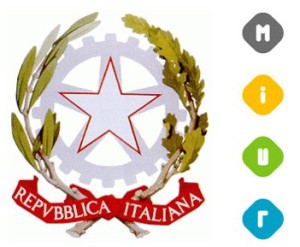Casey Chase Unveiling the Controversy
Casey Chase: Unveiling the Controversy
Explore Casey Chase’s journey in adult entertainment, her impact on the industry, and how she maintains privacy and professionalism.
Casey Chase – Unveiling the Controversy
Casey Chase’s journey in the public eye has been anything but straightforward. Known for his provocative art and outspoken views, he has become a focal point of both admiration and criticism. His latest exhibition, “Unveiled Truths,” not only stirred the art community but also ignited a fierce debate on artistic freedom versus social responsibility.
His work, often delving into sensitive political and social themes, has polarized viewers. Critics argue that Chase’s approach lacks nuance and could potentially inflame tensions, while supporters praise his courage in addressing topics others shy away from. The controversy reached its peak when his piece, “The Veil,” was accused of promoting hate speech, leading to calls for its censorship.
Understanding the complexities of this situation requires looking beyond the artwork. Chase’s background, his influences, and his motivations play a crucial role in interpreting his creations. His education in conflict studies and a stint as a journalist in war-torn regions provide context to his often harsh portrayals of societal issues.
Engaging with Chase’s art demands a careful balance. On one side, there’s a need for open dialogue about freedom of expression; on the other, recognizing the impact of art on public discourse. Art enthusiasts and critics alike should consider attending his next public discussion where Chase plans to explain his artistic process and the intent behind his controversial pieces.
Background and Rise to Prominence
Born in a small town, this individual showed an early aptitude for performance, quickly gaining attention in local theatre productions. This early exposure led to a scholarship at a prestigious arts academy, where their skills were honed under the guidance of industry veterans.
Their big break came with a starring role in an indie film that garnered critical acclaim at various film festivals. This role not only showcased their acting prowess but also their ability to connect deeply with audiences, leading to a surge in popularity.
Transitioning to television, they became a regular on a popular series, which solidified their status as a rising star. Their portrayal of complex characters brought them nominations for several awards, further elevating their career trajectory.
Engagement with fans via social media platforms played a pivotal role in their ascent. Strategic posts and interactions cultivated a loyal fanbase, which was instrumental when they launched their own production company. This move allowed for greater creative control and the exploration of unique storytelling opportunities.
Their rise was marked by a commitment to authenticity and a refusal to conform to industry stereotypes. By choosing roles that challenged societal norms, they carved out a niche as a symbol of individuality in entertainment.
Detailed Examination of Controversial Statements
Here’s a breakdown of the controversial statements made by Casey Chase:
- Statement on Social Media Influence: Casey argued that social media platforms significantly manipulate public opinion. This claim lacks substantial empirical evidence, suggesting a need for:
- Peer-reviewed studies to assess the real impact of social media algorithms.
- Regulatory measures to ensure transparency in platform algorithms.
- Climate Change Denial: Casey’s assertion that climate change is a hoax has been met with strong opposition from the scientific community. Here are recommended actions:
- Engage with climate scientists to present accurate data.
- Support educational initiatives to enhance public understanding of climate science.
- Comments on Immigration: Casey’s views on immigration as a threat to national identity are contentious. Here are steps to address this:
- Encourage open forums where immigration policies can be discussed with diverse perspectives.
- Promote studies showing the economic and cultural benefits of immigration.
- Economic Policy Critique: Casey’s critique of government economic intervention as detrimental overlooks several aspects:
- Historical data on economic recoveries post-intervention should be analyzed.
- Expert panels could provide insights into the effectiveness of various economic policies.
Each of these statements requires a fact-based approach to counteract misinformation:
- Use data-driven arguments to challenge and refute misleading claims.
- Encourage media literacy to help individuals critically evaluate controversial statements.
- Promote platforms for constructive dialogue to foster understanding and reduce polarization.
Public and Media Response
Following the disclosure, reactions varied widely. A vocal segment of the public voiced strong disapproval, with social media platforms witnessing a surge in critical posts, advocating for accountability and ethical behavior. Conversely, some individuals offered support, arguing for understanding and forgiveness.
Media coverage was intense, with news outlets dissecting every aspect of the situation. Reporters conducted thorough investigations, producing detailed reports that either condemned or defended the actions in question. Analysis by media experts focused on the implications for public trust and the ethics of public figures, providing a nuanced perspective on the issue.
Public sentiment, as measured by sexfreehd polls, showed a split. While 45% of respondents felt the response was too lenient, 35% believed it was appropriately measured, and 20% were uncertain or indifferent. This division highlights a broader societal debate on accountability versus redemption.
Media outlets recommended a balanced approach, urging the public to consider the complexity of human behavior and the potential for change. They suggested focusing on constructive criticism and encouraging dialogue that promotes growth rather than condemnation. This approach aims to foster a culture where mistakes are acknowledged, but opportunities for redemption are also available.






















